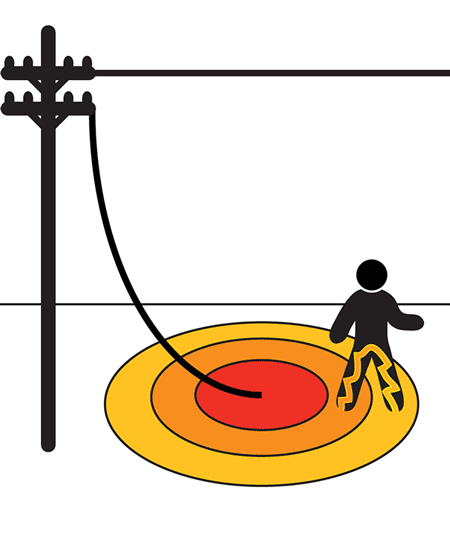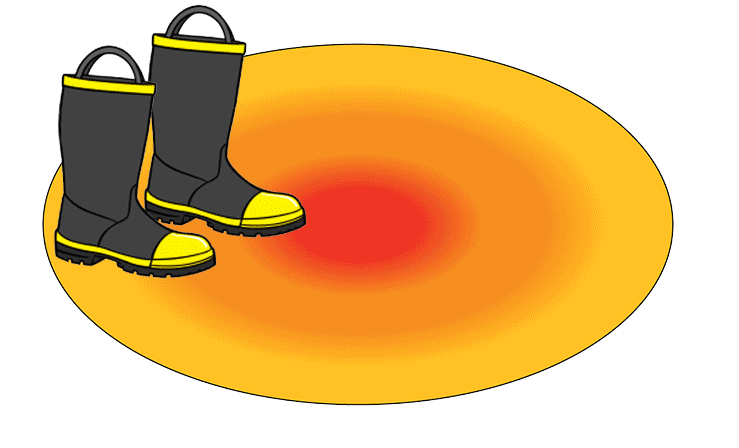| Step potential can be deadly! |
| Step potential is the voltage difference between the two feet of a person standing near an energized, grounded object. This invisible hazard can be deadly for anyone in the vicinity of a downed power line. |
|
|
| How step potential happens |
 When a power line contacts the earth, it carries electrical current into the ground. If the voltage is strong enough, the current will spread out from the point of contact. Voltage will be highest at the point of contact and will diminish with distance from that point. (Voltage levels may vary with ground conditions and the conductivity of the soil.) When a power line contacts the earth, it carries electrical current into the ground. If the voltage is strong enough, the current will spread out from the point of contact. Voltage will be highest at the point of contact and will diminish with distance from that point. (Voltage levels may vary with ground conditions and the conductivity of the soil.)
If you walk across this energized area, the voltage between your feet will differ. Electricity will use your legs as a path to travel from an area of higher voltage to an area of lesser voltage, resulting in electrocution or serious injury.
|
| The shuffle technique is key |
If you are in the vicinity of a downed power line, you must take small, shuffling steps with your feet close together and in contact with the ground at all times. Do not take large steps and do not allow your heels to pass your toes. This ensures both feet remain in areas of similar voltage.
 Continue shuffling until you are a safe distance away: at least 30 feet away from a downed distribution line and at least 100 feet away from a downed transmission line. These clearance distances are minimums; always use the maximum possible clearance. Continue shuffling until you are a safe distance away: at least 30 feet away from a downed distribution line and at least 100 feet away from a downed transmission line. These clearance distances are minimums; always use the maximum possible clearance.
|
| Distance is your best protection |
|
Downed power lines can be energized even if they don’t hum or spark, and even lines that appear dead could become re-energized at any moment. If you know or even suspect that a power line is down, contact National Grid immediately and take these precautions:
|
| • |
|
Keep yourself and all vehicles and equipment at least 30 feet away from any downed distribution line and at least 100 feet away from downed transmission lines. |
| • |
|
Do NOT rescue anyone in proximity to a downed power line until the National Grid representative confirms the line has been de-energized. |
| • |
|
Maintain a safety perimeter to keep the public far away from the area until National Grid personnel give the all clear. |
|